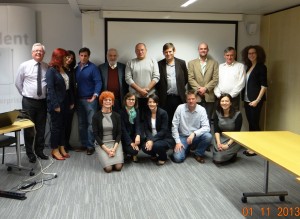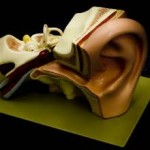Law, Medicine and Science: Reflections from Brussels and Newby Bridge
Two meeting in which I have recently participated in illustrate the serious issues to be confronted in litigation where law, medicine and epidemiology inevitably meet.
On 1st November 2013, Per Laleng and I attended a meeting in Brussels organised by Claire McIvor of the University of Birmingham, which resulted in the inception of the International Association of Epidemiology and Law.
The participants of the meeting could reasonably be described as an eclectic mix of medics, epidemiologists and lawyers from all over the world.
The photograph shows, in no particular order,
- Derek Adamson, Solicitor, DWF LLP, Birmingham
- Jyoti Ahuja, Law, University of Birmingham
- Colin Aitken, Forensic Statistics, University of Edinburgh
- Oana Badarau, Biomedical Ethics, University of Basel
- Alex Broadbent, Philosophy, University of Johannesburg
- David Egilman, Medicine, Brown University
- Charles Feeny, Barrister, St Johns Buildings Chambers, Liverpool
- Michael Freeman, Forensic Medicine and Epidemiology, Oregon Health & Science University
- Beatrice Loan, Forensic Pathology, Grigore T Popa University of Medicine and Pharmacy, Institute of Forensic Medicine, Iasi, Romania
- Per Laleng, Law, University of Kent
- Sana Loue, Epidemiology, Cast Western University
- Claire McIvor, Law, University of Birmingham
- Calin Sciparu, Forensic Pathology, Institute of Forensic Medicine, Iasi, Romania
The breadth of experience could reasonably be described as diverse, but it was easy to identify common issues in terms of the translation of scientific or epidemiological evidence into the forensic context. Colin Aitken of the University of Edinburgh is responsible for the Royal Statistical Society Advice and Guidelines following the Sally Clark case, and he was able to advise that this work is already 500 pages long. The perspective of David Egilman, of Brown University, Boston, showed clear concern for corporate bias achieved through financial muscle in the American litigation system.
Derek Adamson, of DWF, and I were able to talk of the English litigation system and its perhaps rather tortuous relationship with scientific and epidemiological evidence. The last decade might reasonably be considered a somewhat embarrassing one for the British judicial process in terms of its appreciation of scientific and epidemiological evidence. The Sally Clark case needs only to be mentioned to confirm this view. This was compounded by the Supreme Court’s discussion of epidemiological evidence in the Sienkiewicz case where no such evidence had been before the Courts at any stage in the process of the litigation, and where the Supreme Court Justices relied upon their own understanding and interpretation of epidemiological evidence.
Part of my own perspective is that the appellant process in the United Kingdom is not well suited to the determination of important issues of principle, or the giving of guidance for future cases. This is particularly so, because the appellant process works on the basis that the factual situation is crystallised at an early stage. This results in cases proceeding as appeals apparently on important points of principle but where factual uncertainty, or ambiguity, means that they are not the best vehicle for resolution of principle or further guidance. Sienkiewicz is clearly such an example, as is Gregg v Scott.
A week later I was invited to speak on clinical negligence at the North West Obstetric and Gynaecological Consultants’ Meeting held at the Swan Hotel, Newby Bridge, Cumbria. It was a very different venue although equally agreeable, and a very different type of meeting. The attendees were essentially working consultants and the meeting essentially practical.
It proved to be an opportune day to be speaking to consultants about clinical negligence claims. The morning papers and television reported the National Audit Office report which indicated that birth injury claims are now costing the NHS £500 million per annum, that is the equivalent of £700 for every live birth in England and Wales. The total cost of clinical negligence cases to the NHSLA now comfortably exceeds £1 billion.
It is fair to say that the consultants whom I met, and who are clearly doing their very best to achieve optimal treatment for their patients, are bemused by the environment in which they have to operate and the cost of such claims to the overall NHS budget. Often the breach of duty found in such cases could be described as marginal; that is an error of judgement over a few minutes whilst observing a CTG trace, but nonetheless the financial consequences are enormous running into several million pounds. It was also hard to explain why the appropriate provision for a child injured in these circumstances should be considered so extravagant by comparison to the circumstances of children who are born severely impaired but where there is no obvious fault or explanation. Whilst fault liability is ingrained in our society and legal system, the consequences of the same appear to many to be disproportionate.
A common theme of both meetings was that the interaction between expert evidence and judicial decision must be significantly improved. Any activity which costs the general public in excess of £1 billion might be thought to be the subject of specific scrutiny and critical thought. However, it is not unfair to say that the key players in clinical negligence, that is doctors, lawyers and judges, treat it in the same way as when it was thought it was difficult to sue your doctor, and judges were perceived as being protective of the medical profession.
Whilst the courts have improved their approach to expert evidence, in particular through CPR part 35, and parallel approaches in criminal and family litigation this has been, in reality, from a very low base level. Practitioners and judges in the middle of the last century were confronted with a situation where a professor would go into the witness box without any clear understanding on the part of the opposing advocate, or the judge, as to precisely what the professor was going to say. However, such procedural improvements have arguably not moved the position significantly forward from one where a great deal depends upon the performance of a particular witness in the witness box and the judge’s ability to understand the expert evidence which may, with respect, not be entirely easy. These problems are compounded by the factor mentioned above, that is the crystallising of the factual enquiry at an early stage of a litigation process.
Reflecting on these meetings, it was impossible not to feel daunted by the challenges in affecting the type of improvements required, and which Claire McIvor and others reasonably, and forcefully, believe are necessary. Such improvement is probably only likely to occur if all involved participate. Whilst lawyers and judges can reasonably be criticised for the failure to modernise, both procedurally and intellectually, the legal system, expert witnesses must understand that in respect of their specialty these lawyers and judges are, in essence, lay people who can easily be blinded by science.
It is always preferable to end on a positive note so I will quote the old Chinese proverb that the longest journey began with a single step. Also, I have to record how much I enjoyed both events and the companionship and stimulation of the participants in them.
The only downside of the Brussels event was there seemed to be some fault with the air conditioning, which meant that by the end of the meeting I had a very dry mouth and might account for my somewhat lugubrious appearance in the photograph. However, being in Brussels, I was able to deal with this immediately and effectively by sampling the local liquid produce.
Charles Feeny.


